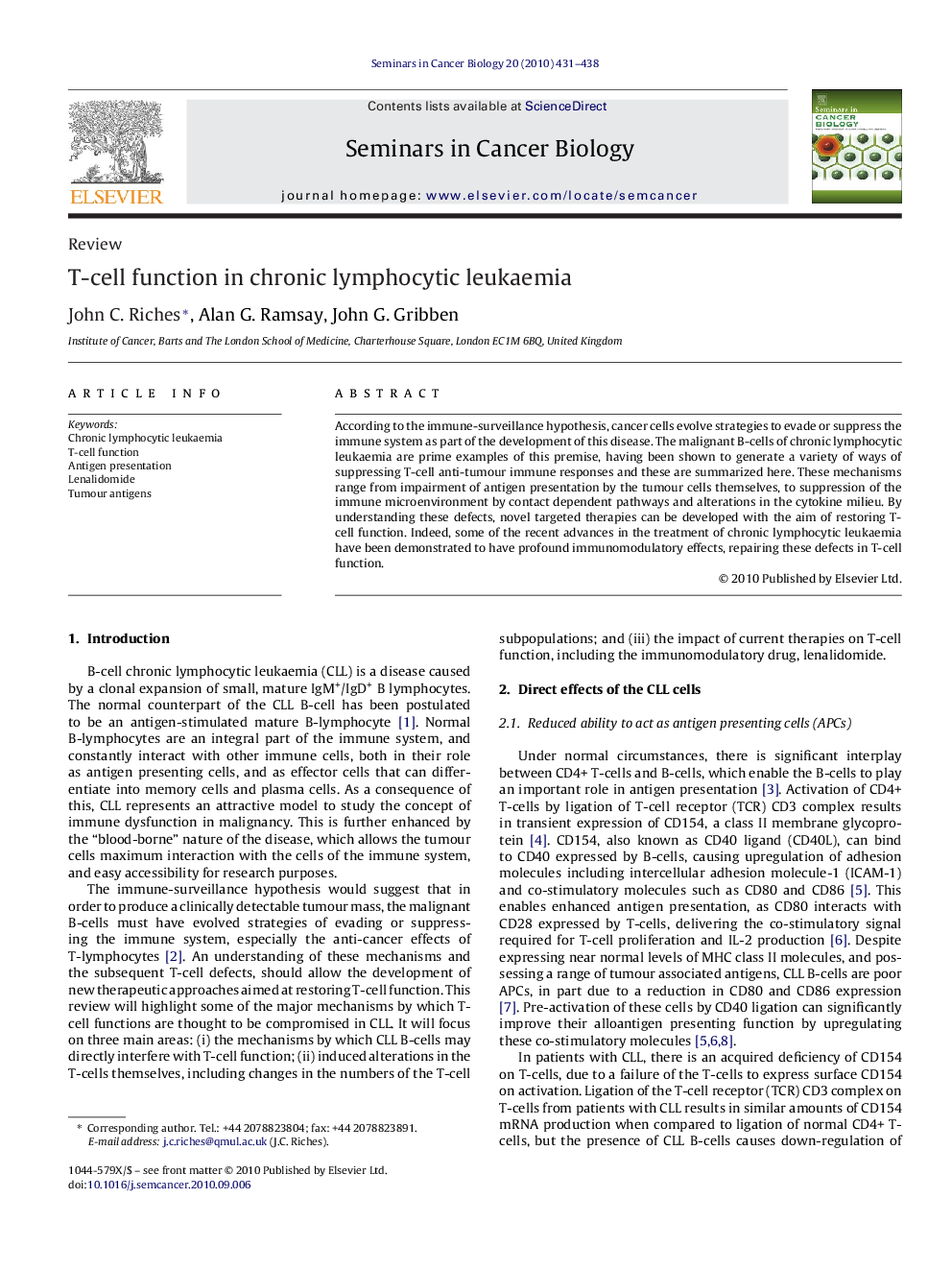| Article ID | Journal | Published Year | Pages | File Type |
|---|---|---|---|---|
| 2023870 | Seminars in Cancer Biology | 2010 | 8 Pages |
According to the immune-surveillance hypothesis, cancer cells evolve strategies to evade or suppress the immune system as part of the development of this disease. The malignant B-cells of chronic lymphocytic leukaemia are prime examples of this premise, having been shown to generate a variety of ways of suppressing T-cell anti-tumour immune responses and these are summarized here. These mechanisms range from impairment of antigen presentation by the tumour cells themselves, to suppression of the immune microenvironment by contact dependent pathways and alterations in the cytokine milieu. By understanding these defects, novel targeted therapies can be developed with the aim of restoring T-cell function. Indeed, some of the recent advances in the treatment of chronic lymphocytic leukaemia have been demonstrated to have profound immunomodulatory effects, repairing these defects in T-cell function.
